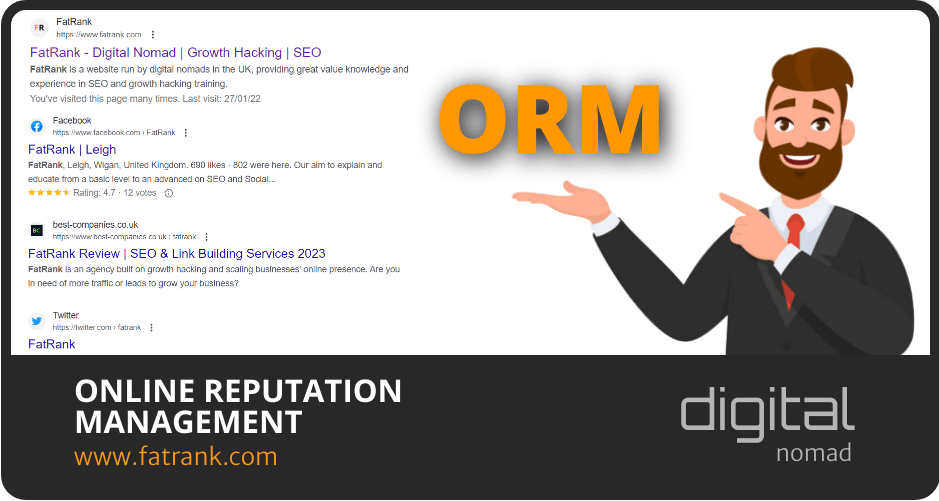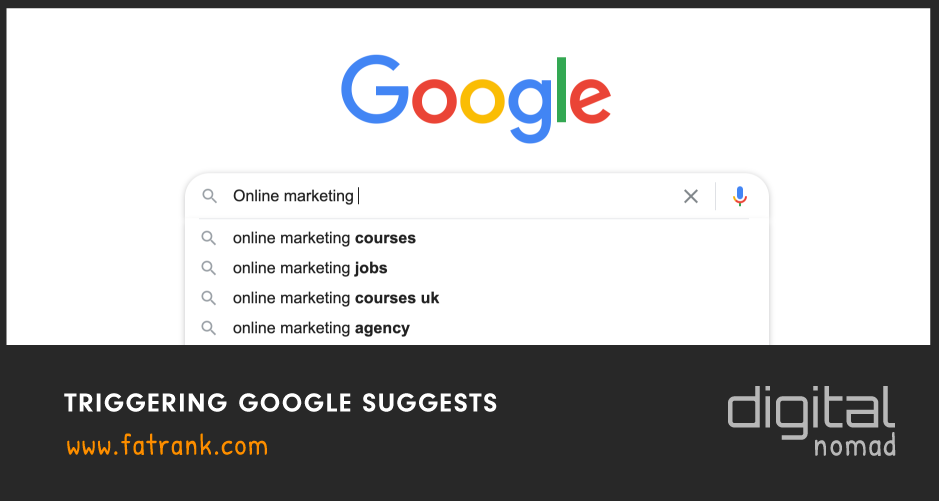
How To Market Your Business
In the ever-evolving landscape of business, effective marketing is crucial to stand out and reach potential customers.
Understanding the intricacies of business marketing is essential for any entrepreneur or business owner looking to grow their brand and boost sales.
In this comprehensive guide, we will delve into the fundamental aspects of business marketing, from the importance of marketing to creating a strategic marketing plan. We will explore the different types of marketing, including digital, traditional, social media, content, and influencer marketing, and discuss how each can be leveraged to maximize your business’s visibility.
We will uncover the key metrics and strategies for measuring and achieving marketing success and practical and effective marketing tactics tailored specifically for small businesses.
Whether you’re a seasoned professional or just starting, this article will equip you with the knowledge and tools to elevate your business through strategic marketing efforts.
Contents
- What Is Business Marketing?
- Why Is Marketing Important for Your Business?
- How Do You Create A Marketing Plan For Your Business?
- What Are the Different Types of Marketing?
- How do you measure the success of your marketing efforts?
- What Are Some Effective Marketing Strategies for Small Businesses?
- Frequently Asked Questions
- What are some effective ways to market your business?
- How can I use social media to market my business?
- What is the importance of SEO in marketing your business?
- How can collaborating with other businesses help market my own?
- How can I measure the success of my marketing efforts?
- What are some budget-friendly options for marketing a small business?
- Related To How To Market Your Business Topics
What Is Business Marketing?
Business marketing involves promoting and advertising products or services to other businesses or organizations, aiming to increase sales and achieve specific business objectives through strategic outreach and communication.
Business marketing plays a crucial role in driving sales by identifying target B2B markets, understanding their needs, and presenting tailored solutions that address their pain points. It is also instrumental in building brand awareness among businesses, establishing credibility, and fostering long-term B2B relationships.
Leveraging various marketing strategies such as content marketing, email campaigns, and digital advertising, businesses can effectively communicate value propositions, showcase expertise, and ultimately influence purchasing decisions in the B2B sector.
Why Is Marketing Important for Your Business?
Marketing is crucial for your business as it enables you to reach and engage with your target audience, build brand recognition, and effectively promote your products or services in the competitive market.
Effective marketing strategies allow businesses to connect with potential customers, understand their needs, and create tailored messages that resonate with them. By establishing a strong brand identity through marketing efforts, businesses can differentiate themselves from competitors and foster customer loyalty.
Marketing plays a vital role in creating brand associations, instilling trust, and influencing consumer perception, ultimately driving sales and sustaining long-term success in the dynamic marketplace.
How Do You Create A Marketing Plan For Your Business?
Creating a marketing plan for your business involves strategic decision-making to align marketing efforts with sales goals, customer needs, and overall business objectives, ensuring a coherent and effective marketing strategy.
The first step in this process is conducting a thorough analysis of the market and consumer behaviors to understand the target audience. This is followed by setting specific and measurable marketing objectives, clearly defining the target market, and identifying the unique selling propositions.
A customer-centric approach is vital, which involves understanding the pain points and challenges faced by the customers and delivering tailored solutions. Creating a detailed action plan with clearly defined tactics, budgets, and timelines is crucial for implementing the marketing strategy effectively.
Define Your Target Audience
Defining your target audience is a critical step in creating a successful marketing plan, as it allows you to tailor your messaging and offerings to specific consumer segments, enhancing brand relevance and strategic marketing effectiveness.
Market segmentation involves dividing the market into distinct groups based on various factors such as demographics, psychographics, and behavioral patterns. Once the segments are identified, targeting strategies come into play, enabling the selection of the most suitable segment that aligns with the brand’s values and offerings. By understanding these segments’ unique needs and preferences, companies can customize their marketing efforts to establish a deeper connection with their audience, thereby fostering brand loyalty and long-term customer relationships.
Set Your Marketing Goals
Setting clear and measurable marketing goals is essential for guiding your marketing efforts and evaluating the effectiveness of your overall marketing strategy, ensuring alignment with business objectives and promotional targets.
When establishing marketing goals, it’s crucial to delve into the specifics and break them into actionable objectives. These goals should be specific, clearly defining what you aim to achieve, whether it’s increasing brand awareness, driving sales, or expanding market reach. They must be measurable so that progress can be tracked and evaluated effectively. Aligning these marketing goals with your overall business strategy ensures that your marketing efforts are impactful and supportive of the business’s long-term growth.
Choose Your Marketing Channels
Selecting the most appropriate marketing channels involves evaluating various options, such as social media, email marketing, and advertising platforms, to effectively reach and engage your target audience through diverse communication channels.
Each marketing channel offers unique advantages and considerations. Social media, for instance, allows for direct interaction with your audience and facilitates content sharing, while email marketing enables personalized communication and direct messaging. Advertising platforms like Google Ads or display networks provide extensive reach and targeting capabilities.
It’s essential to consider the demographics and behavior of your audience to determine which channels to prioritize. For example, younger demographics may be more engaged on platforms like Instagram and TikTok, while professionals may respond better to LinkedIn or industry-specific forums.
The integration of different channels can reinforce your message and create a cohesive brand presence across various touchpoints, increasing the likelihood of engagement and conversions.
Create a Budget
Establishing a marketing budget is essential for allocating resources to different marketing initiatives, ensuring your promotional efforts are well-funded and aligned with sales targets and advertising strategies.
It involves a strategic process of evaluating historical performance, market trends, and anticipated outcomes to determine the most effective allocation of funds. An integral aspect of this process is considering the return on investment (ROI) of various marketing activities to ensure that resources are utilized most efficiently and effectively.
What Are the Different Types of Marketing?
The different types of marketing encompass a wide range of strategies, including digital marketing, traditional advertising, social media engagement, content creation, and influencer partnerships, each offering unique opportunities for businesses to connect with their target audience.
Within digital marketing, businesses capitalize on online channels such as websites, search engine optimization, email campaigns, and social media advertising to reach and engage potential customers. On the other hand, traditional advertising utilizes conventional mediums like print, television, radio, and billboards to establish brand visibility.
Social media engagement has become a transformative force, fostering direct interaction with consumers through platforms like Facebook, Instagram, Twitter, and LinkedIn. Meanwhile, content creation involves crafting compelling narratives, visuals, and multimedia to captivate and inform audiences.
Moreover, influencer partnerships have emerged as a contemporary avenue, leveraging the sway of online personalities to endorse products and services, influencing consumer behavior.
Digital Marketing
Digital marketing leverages online platforms and tools such as Google Ads, social media ads, and email marketing to connect with potential customers, drive website traffic, and generate leads through targeted digital campaigns.
By utilizing the strength of digital platforms, businesses can effectively reach their target audience at various touchpoints in the online sphere. Search engine optimization (SEO) is crucial in enhancing a company’s online visibility and ensuring that its website ranks higher in search engine results.
Social media promotions provide an avenue for engaging with customers, building brand awareness, and fostering a community around the brand. With the advent of influencer marketing, brands can leverage the reach and credibility of social media personalities to enhance their digital presence and connect with a larger audience.
Online advertising, including display ads, video ads, and native advertising, enables businesses to showcase their products or services across a wide range of digital platforms. It offers granular targeting options to ensure the ad content reaches the most relevant audience based on demographics, interests, and browsing behavior.
Traditional Marketing
Traditional marketing involves offline promotional activities such as events, print media, and press coverage, allowing businesses to engage local audiences, build brand recognition, and generate interest through non-digital channels.
Event participation is a crucial aspect of traditional marketing, enabling businesses to interact directly with potential customers. Whether sponsoring a local community event, hosting a launch party, or participating in trade shows, events provide a platform to showcase products or services and establish personal connections.
Print media strategies involve advertising in local publications, including newspapers, magazines, and flyers, which remain influential in reaching specific demographics and local communities.
Press engagement entails cultivating relationships with local journalists and securing media coverage for business-related news, events, or success stories, contributing to brand visibility and credibility.
Social Media Marketing
Social media marketing harnesses the reach and engagement potential of platforms like Facebook, Twitter, Instagram, and LinkedIn to connect with audiences, share branded content, and foster community interactions, driving business growth through strategic social media campaigns.
Social media platforms have their unique strengths, each requiring tailored strategies. Facebook’s algorithm favors content that sparks meaningful interactions, encouraging video content and engaging visuals. Conversely, Twitter thrives on concise, engaging messaging and trending hashtags, while Instagram is a visual-centric platform emphasizing high-quality images and stories. LinkedIn, on the other hand, is ideal for professional networking and thought leadership. Successful content creation hinges on understanding these nuances.
Audience engagement is vital. Active listening, timely responses, and fostering discussions contribute to community building. Utilizing interactive features, polls, and user-generated content effectively encourages participation. In parallel, leveraging analytics to understand audience preferences and behavior facilitates well-considered choices, optimizing content for enhanced engagement.
Content Marketing
Content marketing focuses on creating valuable, relevant, consistent content to attract and retain a clearly defined audience, enhancing brand visibility, and driving profitable customer action through strategic content distribution and search engine optimization.
This marketing approach aims to provide targeted information and entertain the audience rather than directly pitching products or services. To achieve this, content marketers integrate SEO strategies to enhance the discoverability of their content, ensuring it reaches the right audience.
Brand storytelling plays a crucial role, capturing the audience’s attention and fostering emotional connections. By crafting compelling narratives, brands can establish a strong rapport with their audience, increasing loyalty and fostering advocacy.
Influencer Marketing
Influencer marketing involves partnering with popular personalities on platforms like YouTube, Instagram, and TikTok to promote products or services, leverage their audience influence, and create authentic brand endorsements, driving customer engagement and sales through credible influencer collaborations.
Influencer selection is crucial, as brands consider factors such as relevance, reach, and engagement metrics to ensure that the influencer’s audience aligns with the target market. Effective collaboration strategies entail fostering genuine relationships with influencers, allowing creative freedom while maintaining the brand’s message. The impact on the audience is significant, as consumers trust recommendations from influencers and feel a personal connection, leading to heightened brand awareness and increased product consideration.
How do you measure the success of your marketing efforts?
Measuring the success of your marketing efforts involves tracking key performance indicators (KPIs), analyzing customer feedback, and monitoring sales and revenue data, providing valuable insights into the effectiveness of your marketing strategies and customer engagement.
Tracking KPIs is crucial for understanding the performance of your marketing campaigns. By setting and monitoring specific KPIs such as conversion rates, customer acquisition cost, and customer lifetime value, you can clearly understand the impact of your marketing efforts.
Analyzing customer feedback lets you gauge customer sentiment, preferences, and satisfaction levels. By leveraging tools such as surveys, social media monitoring, and online reviews, you can uncover valuable insights that can inform future marketing initiatives and enhance customer experience.
Monitoring sales and revenue data provides concrete evidence of how your marketing efforts translate into actual business outcomes. By evaluating metrics such as sales growth, average order value, and return on investment, you can measure the direct impact of your marketing activities on the company’s bottom line.
Track Key Performance Indicators (KPIs)
Tracking KPIs such as website traffic, conversion rates, and engagement metrics using tools like Google Analytics provides valuable performance insights, enabling businesses to assess the impact of their marketing strategies and make informed strategic adjustments.
This type of monitoring allows companies to understand their audience behavior, track the effectiveness of different campaigns, and identify areas for improvement. By analyzing website analytics, they can recognize the sources of traffic, popular content, and user interaction patterns.
Conversion metrics, on the other hand, help in evaluating the success of the sales funnel and the overall profitability of digital endeavors. It is crucial to measure not only the quantity but also the quality of conversions.
Furthermore, performance indicators act as signposts, guiding businesses towards their goals. By focusing on relevant KPIs, organizations can align their efforts with their strategic objectives, ensuring that resources are utilized efficiently and effectively.
Analyze Customer Feedback
Analyzing customer feedback through surveys, reviews, and social media interactions provides valuable qualitative insights into customer satisfaction, product perception, and brand sentiment, shaping marketing strategies and customer-centric initiatives.
Surveys are an essential tool for obtaining systematic feedback, allowing businesses to gauge customer satisfaction, identify areas for improvement, and measure the sales impact of their products or services. Leveraging sentiment analysis tools helps identify patterns in customer emotions and opinions, thereby providing a deeper understanding of customer sentiment and facilitating targeted interventions to enhance customer satisfaction metrics. By intertwining these strategies, businesses can establish a comprehensive approach to feedback analysis, ultimately strengthening their position in the market.
Monitor Sales and Revenue
Monitoring sales performance, revenue generation, and purchase patterns provides quantitative insights into the impact of marketing efforts on business outcomes, enabling well-considered choices and strategic adjustments based on financial data and customer transactions.
Financial analytics are crucial in evaluating sales performance by analyzing sales trends, customer behavior, and overall revenue growth. This data helps businesses identify areas of strength and weakness, allowing for targeted improvements in marketing strategies and sales techniques.
Tracking purchase trends enables companies to understand consumer preferences, optimize inventory management, and forecast future demand, ultimately leading to improved customer satisfaction and revenue attribution.
What Are Some Effective Marketing Strategies for Small Businesses?
Effective marketing strategies for small businesses encompass leveraging social media platforms, collaborating with other businesses, offering promotions and discounts, and prioritizing customer retention to maximize outreach and engagement within a limited operational scope.
Social media platforms are crucial for small businesses to establish a strong online presence and connect with their target audience. Small businesses can effectively increase brand awareness and drive customer engagement by developing engaging content, utilizing targeted ads, and fostering genuine interactions with followers.
Creating strategic partnerships with complementary businesses can expand the reach and enhance credibility. Small businesses can tap into a wider customer base and benefit from cross-promotional opportunities by featuring each other’s products or services, hosting joint events, or sharing resources.
Utilize Social Media
Harnessing the power of social media platforms such as Facebook, Instagram, and Twitter enables small businesses to connect with their target audience, share engaging content, and foster community interactions, driving brand visibility and customer engagement.
Each social media platform offers unique opportunities for small businesses to showcase their products or services and engage with their audience effectively.
For instance, on Facebook, businesses can create engaging posts, share industry insights, and run targeted ads to reach specific demographics, while Instagram allows for visually compelling content through images and videos.
On the other hand, Twitter provides a real-time engagement platform, fostering conversations through hashtags and social listening.
Effective content creation is key to capturing the attention of the audience across these platforms. Utilizing a mix of visual, written, and interactive content tailored to the preferences of each platform’s user base can significantly enhance a business’s reach and engagement.
Small businesses can leverage features such as Facebook Groups and Twitter chats to build a robust community to facilitate meaningful discussions and connections among their followers.
Responding promptly to comments and messages and actively participating in relevant industry conversations can further strengthen a business’s online presence and foster a loyal community of followers.
Collaborate with Other Businesses
Collaborating with other businesses through partnerships, joint promotions, and co-marketing initiatives creates mutually beneficial opportunities for small businesses to expand their reach, tap into new customer segments, and leverage shared promotional resources.
Small businesses often benefit from joining forces with complementary enterprises, allowing them to access wider networks and combine strengths. Strategic alliances enable cost-effective marketing initiatives while maximizing brand exposure. By forging strong partnerships, businesses can diversify their customer base, enhance their credibility, and discover innovative ways to differentiate themselves in competitive markets. Joint promotions often lead to increased brand visibility, enhanced customer engagement, and greater market penetration, fostering sustainable growth for all collaborating entities.
Offer Promotions and Discounts
Offering promotions and discounts to customers through targeted campaigns, seasonal offers, and loyalty programs incentivizes purchase behavior, fosters customer loyalty, and stimulates sales growth for small businesses.
These promotional strategies enable small businesses to attract new customers, retain existing ones, and create a positive brand image while increasing their market share and profitability.
Discount offers and seasonal promotions can drive excitement and urgency in purchasing decisions, while customer loyalty programs build lasting relationships, encouraging repeat business and advocacy. Small businesses can effectively compete and thrive in their markets by integrating various promotional tactics, such as special deals, limited-time offers, and rewards programs.
Focus on Customer Retention
Prioritizing customer retention through personalized engagement, post-purchase interactions, and loyalty programs enhances the long-term value of customer relationships, driving repeat sales and strengthening brand advocacy for small businesses.
By engaging with customers personally, businesses can build a strong bond and create a sense of loyalty. This leads to increased repeat sales, as satisfied customers are more likely to return. Loyalty initiatives such as exclusive offers, rewards programs, and personalized communication further incentivize customers to continue their patronage. Implementing effective customer retention strategies can significantly contribute to the growth and success of a small business by establishing a loyal customer base that advocates for the brand.
Frequently Asked Questions
What are some effective ways to market your business?
Some effective ways to market your business include creating a strong online presence through social media and a professional website, networking with other businesses and potential customers, and utilizing email marketing campaigns.
Social media can be a powerful tool for marketing your business. Start by creating a business profile on popular platforms like Facebook, Instagram, and Twitter. Share engaging content, interact with your followers, and utilize hashtags to reach a wider audience.
What is the importance of SEO in marketing your business?
SEO, or search engine optimization, is crucial for online marketing. Using keywords and optimizing your website’s content can improve your ranking on search engine results pages and drive more traffic to your business.
How can collaborating with other businesses help market my own?
Collaborating with other businesses can be a great way to expand your reach and attract new customers. Consider partnering with complementary businesses to offer promotions or hosting joint events to gain exposure.
How can I measure the success of my marketing efforts?
It’s important to track and measure the success of your marketing efforts to see what strategies are working and what needs improvement. Utilize tools like Google Analytics to monitor website traffic and engagement and collect customer feedback to gauge satisfaction.
What are some budget-friendly options for marketing a small business?
If you’re working with a limited budget, small businesses still have plenty of affordable marketing options. Consider utilizing email marketing, social media, local advertising, and networking to promote your business without breaking the bank.
Related To How To Market Your Business Topics
Here are all the topics related to How To Market Your Business in July 2024.
- Brand Jacking

- Brand SERP SEO

- Brand SERPs Course

- Branded Corporate Video Production Service

- EEAT SEO

- Getting Featured in Google News

- How To Build An Online Presence

- How To Market Your Business

- Link Building For Author Bio

- Link Building For Awards Won

- Newsjacking

- Online Reputation Management

- Opinion Sculpting

- Rank Jacking

- Rate My Business Review

- Reputation Management Agencies

- Reviews To Improve Your Online Reputation

- Trend Jacking

- Triggering Google Suggests

- Why is seomerch the market leader in SEO focused merchandise?

- Why Isn't My Website Showing Up On Google


About FatRank
Our aim to explain and educate from a basic level to an advanced on SEO and Social Media Marketing.
